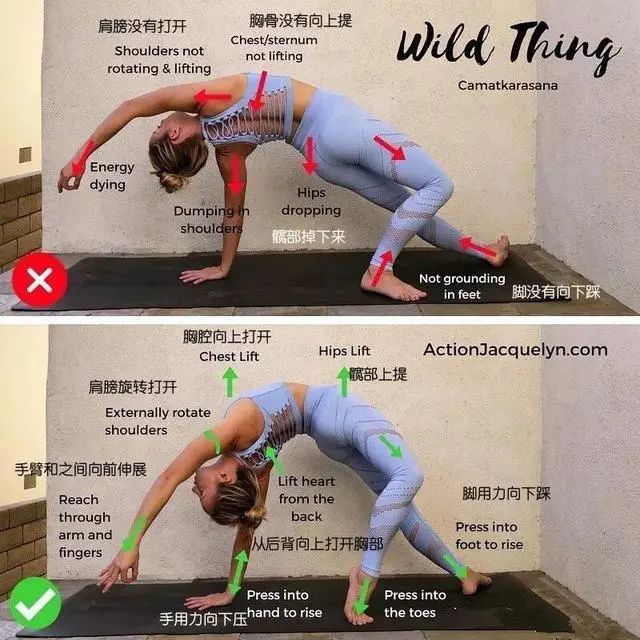For beginners of yoga, it is very important to understand the correct posture of yoga asana and master the correct methods of yoga practice.

Whether the yoga movement is standard and the method is correct directly determines the quality of the movement and affects the effect of the practice.

If the action is not standardized and the method is not correct, it will not only look bad and fail to achieve the desired effect, but also may cause unnecessary muscle strain or sprain.

Many yoga lovers do not go to a professional yoga studio to find a teacher to guide them.

Instead, they watch videos at home to observe and practice, so it is inevitable that some movements will be non-standard.

Here, I have compiled several groups of frequently practiced yoga pose data for you.

Through detailed illustrations of correct and wrong movements, I can help you correct the wrong postures and methods, so that you can practice more gracefully and have more obvious effects.
Asana 1.
Ox face 1.
Keep your back straight and your head and neck relaxed naturally.
Don’t lower your head and don’t use your right arm to press your neck.
2.
Be careful to relax your shoulder blades and don’t be too nervous.
3.
When the left elbow bends back, open it and don’t pull it up too tightly.
Pose 2: Camel pose 1.
Keep your thighs and hips vertical to the ground.
Do not push forward.
2.
Keep the lower back extended, not folded from the back waist.
3.
The chest should be extended upward.
If the chest is not opened, it is difficult to achieve the desired effect.
4.
Pay attention to the natural relaxation of the shoulders and neck, and do not tense and contract.
Pose 3.
Wild pose 1.
Our toes and fingers should be pressed down.
The soles of our feet should step on the ground, not on the side.
2.
The hips should be lifted up, the back should be extended upward, and the chest should be opened.
3.
Shoulders should be relaxed, arms should be kept extended, and do not droop feebly.
Posture 4: arm handstand against the wall 1.
Note that the palms of both feet should step on the wall, and do not point your toes on the wall.
2.
The spine should be lengthened and extended, not too sunken.
3.
The head and neck should naturally droop.
Do not lift them up.
Look at the wall, not the ground.
Asana v.
bow 1.
Pay attention to the natural relaxation of the head and neck, do not shrink the neck, and do not tilt the head back.
2.
Your shoulders should sink.
Don’t shrug them up.
3.
The chest should be lifted up and not sunk.
4.
Notice that the legs should be upward and backward, and the feet and hands should be pulled hard against each other.
Your forwarding and collection is our greatest encouragement!.

